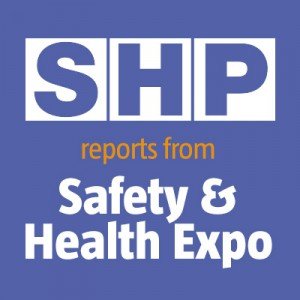How safety professionals can effectively engage the board
 The modern safety professional must be seen as an influencer and thought leader, someone who needs to engage effectively with their company’s board and senior leaders to successfully build health and safety into the company’s agenda.
The modern safety professional must be seen as an influencer and thought leader, someone who needs to engage effectively with their company’s board and senior leaders to successfully build health and safety into the company’s agenda.
Yet often when health and safety professionals do address the boardroom they do not engage them effectively, which is not only is it a wasted opportunity it makes future engagement that much harder.
In a panel debate at Safety and Health Expo, Dr Kirstin Ferguson, a leading board director and international expert in safety leadership led a conversation with Gareth Broughton, UK SES Manager, Mars UK and Mike Belson, Director, International Environment, Health & Safety Services.
The key message from the thought-provoking session was clear: in order to engage the board, health and safety professionals must learn the language of business. Understanding what keeps senior managers up at night and how you can help them reach their goal will serve far better than simply talking about health and safety statistics.
Equally, it is essential that you understand what the core business values are. Once you understand these you can start to align health and safety messages to these, to make them far more relevant to the board. Simple yet effective, find the triggers that will engage the board and you gain yourself a permanent and valued position at the table.
Both panel members were clear in their message – language is the key barrier between the board and health and safety professionals.
To this end, the Gareth revealed anyone promoted to a senior leadership role in his organisation gets specific training on roles and responsibilities and specifically what these mean to the individual. By getting this message across early and clearly it allows for a far better discussion and encourages two-dialogue.
Mike tells his management team that their job – and indeed his own job – is to make him – the health and safety professional, redundant. Once the business is at that point of maturity, it is time to move on and help another organisation.
Gareth provided an example that I am sure many of us can relate to. Whilst talking to his engineering team they were able to passionately relay what their roles and responsibilities were. However, further into the conversation the team mentioned it was disappointing/unusual that they had to produce the new standard/process, and surely this was a health and safety role.
It is at this point that immediate intervention is needed, by reminding the team what they had been talking about not 5 minutes ago. By explaining to the team exactly what those roles and responsibilities mean for them as an individual, you can start to convey why such processes/standards should never been coming from the health and safety team.
A member of the audience asked how they could deal with the ‘nay-sayers’? This tied up the talk quite well because it returned to the discussion of language. There are always some that will be against additional process, reject new standards and deny the need for more assurance.
The key to engaging with these individuals positively is understanding not only what they are ‘naying’ but also why. It may be past negative experiences prevent them from seeing the benefits of what you are proposing. This knowledge will allow you to present your proposal in a different light, addressing their concerns with positive action.
An excellent session with a great chair and passionate panel members offering invaluable insight on how it is possible to engage the board.
How safety professionals can effectively engage the board
The modern safety professional must be seen as an influencer and thought leader, someone who needs to engage effectively with
Rhaynukaa Soni
SHP - Health and Safety News, Legislation, PPE, CPD and Resources Related Topics
Webinar: Risk Management Redefined: How To Drive Continuous Improvement
Webinar: Enhance Health and Safety in Your Supply Chain by Empowering your Contractors
Webinar: Defensive Driving: Reducing the risk of collisions

 The modern safety professional must be seen as an influencer and thought leader, someone who needs to engage effectively with their company’s board and senior leaders to successfully build health and safety into the company’s agenda.
The modern safety professional must be seen as an influencer and thought leader, someone who needs to engage effectively with their company’s board and senior leaders to successfully build health and safety into the company’s agenda.
I completely agree with the leading paragraph. But the reality of delivering good Heaith and Safety is that unless it is realised and delivered by those with legal responsibility then the process is bound to fail I have heard
Previous CDM Coordinators de
Apologies for last comment I completely agree with the statement of the leading paragraph. But the reality is there are occasions when CDM Co ordinators, health & safety advisors some junior and senior managers deliberatlly failed to address contentious issues for fear of upsetting a particular individual or individuals at the risk of not getting further work.And it is more common than admitted. The role of safety is the most important role in the industry and any failure to invoke this set of rules as we know can deliver devastating consequences there are consummate professionals who do what there supposed… Read more »